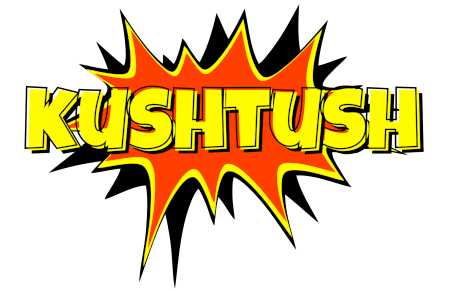Throughout history, people have sought ways to ignite their passions and enhance their romantic encounters. From peculiar substances like ambergris to the enticing allure of chocolate and the age-old ginseng plant, let’s delve into the world of aphrodisiacs and their fascinating allure.
The Enigmatic Ambergris
Would you believe that one of the most sought-after aphrodisiacs on the planet is a concoction derived from squid beaks, fatty secretions, and whale feces? Indeed, this unusual substance is known as ambergris, and it has captivated the senses of many for centuries.
Ambergris begins its journey as an indigestible mass within the intestines of sperm whales, composed of squid beaks and other unappealing remnants. While its exact formation remains a mystery, the prevailing theory suggests it originates as whale excrement. Over the years, ambergris undergoes a transformation, oxidizing through exposure to salt, air, and sunlight as it floats in the ocean until it eventually washes ashore.
Due to its unique and captivating aroma, ambergris is highly sought after by perfume manufacturers and individuals seeking to elevate their romantic encounters. In fact, top-grade ambergris can command prices as high as twenty dollars per gram, equivalent to around nine thousand dollars per pound. The ambergris trade can be fiercely competitive, as demonstrated by a notable rivalry between collectors.
One incident involved Ross Sherman, a seasoned ambergris collector from New Zealand, who was struck by a car driven by John James Vodanovich, one of his primary competitors. In response, Sherman valiantly defended himself using a piece of PVC pipe and emerged with minor injuries.
Fortunately, you don’t need to risk life and limb to acquire ambergris. High-end fragrances like Chanel Number 5, Balmain, Givenchy Amarige, and Gucci Guilty often incorporate this intriguing substance. So, the next time you spritz on your favorite scent, remember that you might be indulging in a touch of whale feces—or, for a more budget-friendly option, a substitute for this unique ingredient.
Chocolate’s Seductive Allure
Chocolate has long been associated with romance and desire, intriguingly raising questions about its potential as an aphrodisiac. There are several compelling reasons behind chocolate’s reputation for inciting passion.
Firstly, chocolate contains tryptophan, a precursor to serotonin—a neurotransmitter that influences mood and sexual desire. Secondly, it boasts phenylethylamine (PEA), a natural stimulant sometimes referred to as the “love molecule” because it induces feelings of infatuation. Lastly, chocolate harbors anandamide, a messenger molecule named after the Sanskrit word for bliss due to its role in promoting happiness.
Despite these intriguing components, scientists often dismiss claims of chocolate having physiological effects on sexual arousal. Instead, any perceived enhancement is typically attributed to psychological factors. Nevertheless, many individuals, especially in recent times, continue to believe in chocolate’s ability to boost libido.
The Power of Ginseng
Ginseng, with its ancient reputation as an aphrodisiac, has intrigued seekers of passion for centuries. The very name “ginseng” originates from the Chinese language and translates to “man plant root.” But does this revered root live up to its sensual reputation?
Studies conducted in 2000 by Nocerino and colleagues found that ginseng contains compounds known as ginsenosides, which have a positive impact on sexual activity. These compounds were observed to relax rabbit sexual organs and induce neurogenic effects conducive to sexual activity. The researchers concluded that ginseng’s antioxidant and organ-protective actions correlated with enhanced cellular activity, positively affecting sexual function and addressing issues like impotence.
While science may provide some evidence for ginseng’s aphrodisiac qualities, its centuries-old reputation continues to make it a symbol of passion and desire.
Maca Root: Nature’s Passionate Gift
Maca root, native to the high-altitude regions of Peru, has earned its place as a natural aphrodisiac. Often referred to as “Peruvian ginseng,” this humble root boasts a long history of promoting sexual vitality and enhancing fertility.
Maca is believed to work its magic by balancing hormones and improving energy levels. It contains various bioactive compounds, including macamides and macaenes, which are thought to stimulate sexual desire and endurance.
This unassuming root has gained popularity worldwide for its potential to increase libido and improve sexual performance. Whether consumed as a dietary supplement or incorporated into various culinary delights, maca root is a testament to the power of nature in igniting passion.
Oysters: The Seafood of Desire
Oysters have long held a reputation as a natural aphrodisiac, their suggestive shape and slippery texture fueling this sensual image. But is there any scientific basis for oysters’ romantic allure?
Oysters are rich in zinc, a mineral essential for maintaining healthy testosterone levels in both men and women. Testosterone plays a key role in regulating libido and sexual function. Additionally, oysters contain high levels of dopamine, a neurotransmitter associated with pleasure and reward.
While some may argue that the psychological effect of indulging in this sensual seafood contributes to its reputation, there’s no denying the nutritional benefits of oysters in supporting overall sexual health. So, whether you savor them on a special date night or include them in your regular diet, oysters remain a symbol of desire and indulgence.
Saffron: The Spice of Love
Saffron, the delicate crimson threads derived from the Crocus sativus flower, has been hailed as an aphrodisiac throughout history. This exquisite spice’s association with love and passion dates back centuries to various ancient cultures.
Saffron’s aphrodisiac properties are linked to its ability to enhance mood and relieve stress. It contains compounds like crocin and safranal, which may influence serotonin levels and promote a sense of well-being. Additionally, saffron’s alluring aroma and vibrant color contribute to its romantic appeal.
While saffron’s effects on desire may be subtle and largely influenced by sensory experiences, its historical significance as a symbol of love and passion endures. Whether used in culinary creations or enjoyed as a soothing saffron tea, this precious spice continues to evoke the essence of romance.
Spanish Fly: Myth or Reality?
The legend of Spanish fly, a purported aphrodisiac, has captured imaginations for centuries. This mysterious substance is said to induce intense sexual desire upon consumption. However, the truth behind Spanish fly’s reputation is more complicated than its mythical allure.
Spanish fly is not a fly at all but a potent irritant derived from the emerald green blister beetle. Historically, it was believed to possess aphrodisiac properties due to its ability to cause blistering and irritation when ingested, which could be mistaken for heightened sexual arousal.
In reality, Spanish fly is a dangerous substance that can lead to severe health complications, including kidney damage and even death. Its use as an aphrodisiac is highly discouraged and illegal in many countries.
The Art of Aphrodisiacs
Throughout history, the pursuit of aphrodisiacs has blended science, sensuality, and folklore. While some of these substances may have scientific merit in enhancing desire, their true power often lies in their ability to create a sensual and romantic atmosphere.
Whether it’s the mysterious allure of ambergris, the indulgence of chocolate, the vitality of ginseng, the passion of maca root, the sensuality of oysters, the love-infused saffron, or the intrigue of Spanish fly, aphrodisiacs have left an enduring mark on our perception of desire and romance.
As you explore the world of aphrodisiacs, remember that the most potent elixir of all is the connection between lovers, the chemistry that ignites their desire, and the shared moments that make every encounter uniquely passionate.
- Enhancing Trust with Blockchain Identity Verification - January 24, 2024
- How Marijuana Turns You into a Food Lover - December 1, 2023
- Behind the Scenes of the U.S. Nuclear Gun - November 28, 2023

